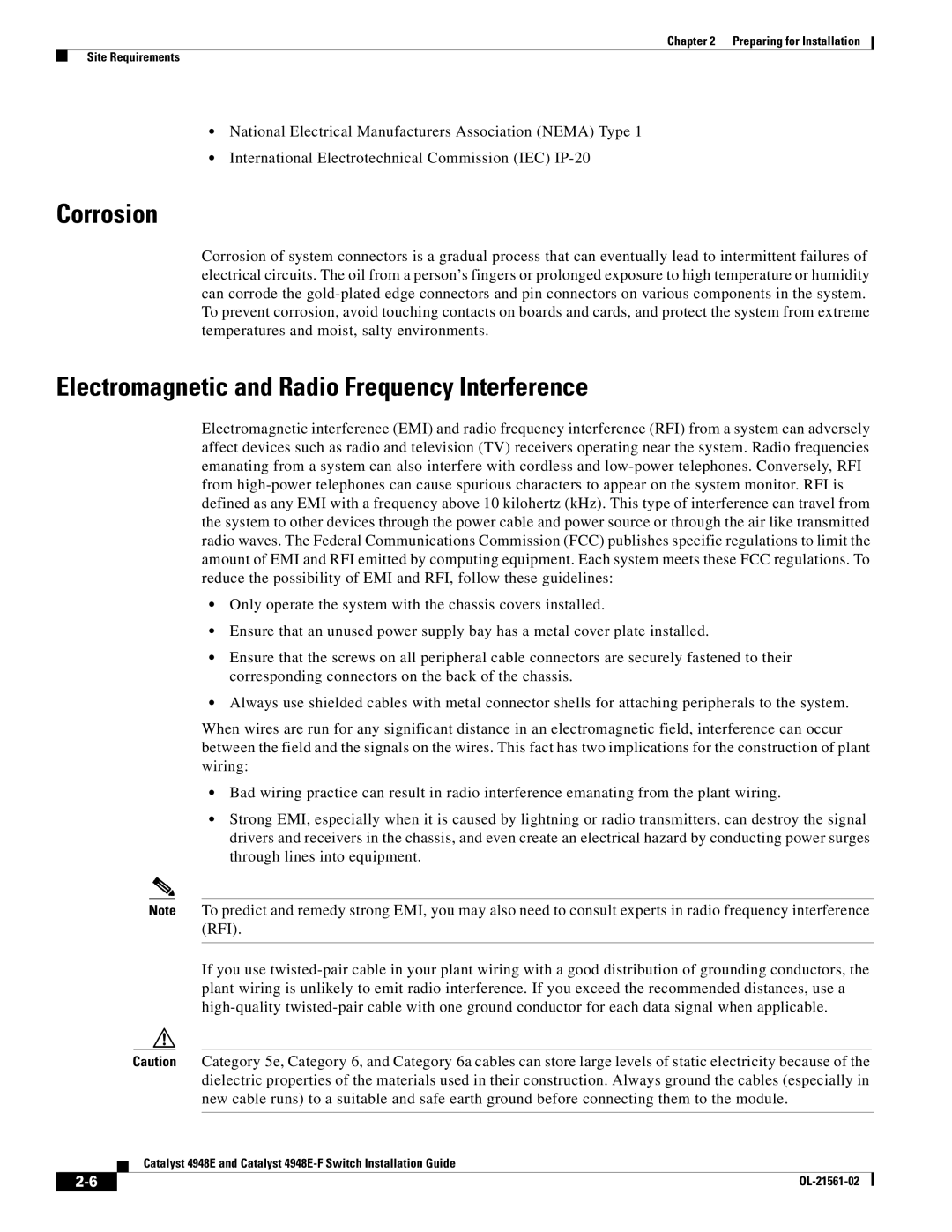
Chapter 2 Preparing for Installation
Site Requirements
•National Electrical Manufacturers Association (NEMA) Type 1
•International Electrotechnical Commission (IEC)
Corrosion
Corrosion of system connectors is a gradual process that can eventually lead to intermittent failures of electrical circuits. The oil from a person’s fingers or prolonged exposure to high temperature or humidity can corrode the
Electromagnetic and Radio Frequency Interference
Electromagnetic interference (EMI) and radio frequency interference (RFI) from a system can adversely affect devices such as radio and television (TV) receivers operating near the system. Radio frequencies emanating from a system can also interfere with cordless and
•Only operate the system with the chassis covers installed.
•Ensure that an unused power supply bay has a metal cover plate installed.
•Ensure that the screws on all peripheral cable connectors are securely fastened to their corresponding connectors on the back of the chassis.
•Always use shielded cables with metal connector shells for attaching peripherals to the system.
When wires are run for any significant distance in an electromagnetic field, interference can occur between the field and the signals on the wires. This fact has two implications for the construction of plant wiring:
•Bad wiring practice can result in radio interference emanating from the plant wiring.
•Strong EMI, especially when it is caused by lightning or radio transmitters, can destroy the signal drivers and receivers in the chassis, and even create an electrical hazard by conducting power surges through lines into equipment.
Note To predict and remedy strong EMI, you may also need to consult experts in radio frequency interference (RFI).
If you use
Caution Category 5e, Category 6, and Category 6a cables can store large levels of static electricity because of the dielectric properties of the materials used in their construction. Always ground the cables (especially in new cable runs) to a suitable and safe earth ground before connecting them to the module.
Catalyst 4948E and Catalyst
| ||
|
